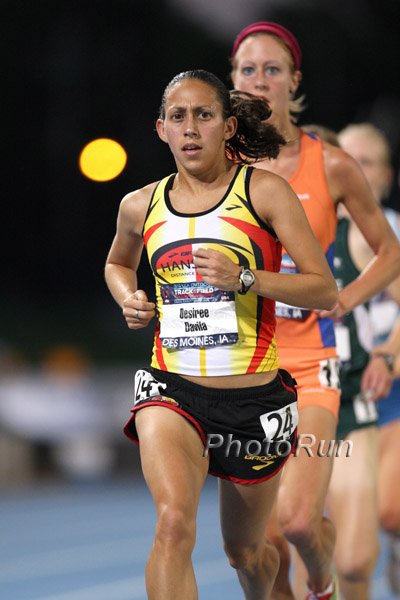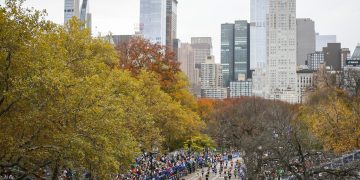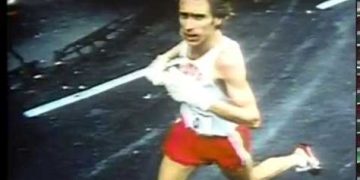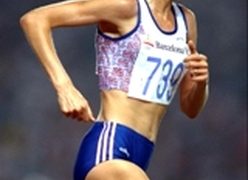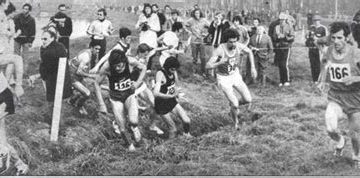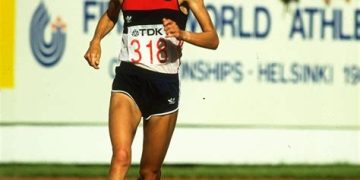Focus on TCS New York City Marathon: Interview With Des Linden
By: Cait Chock
Des Linden heads to the TCS New York City Marathon as one of the leaders of what is to be the deepest American female field ever assembled. For Linden, racing New York is particularly meaningful and an event she’s wanted to be a part of ever since venturing into the 26.2-mile distance.
This year has seen Linden taking an ‘all-in’ attitude in regards to her marathons. She traveled to Kenya prior to her 10th place finish at this year’s Boston Marathon and she’s also reconnected with true speed work, something she hasn’t been able to do since 2012 due to injury.
Coming into New York, Linden is strong, dialed-in to her performance fueling strategy, and is ready to toe the line representing the USA among the best marathoners in the World.
1) This is going to be your first NYC Marathon. As a major headliner for the event, what does running in this race mean to you and what are your goals and strategy going in?
I’ve been looking forward to racing the TCS New York City Marathon since I started running the marathon. It’s one of the biggest stages in the sport and it’s an opportunity to line up with the best marathoners in the world and see how I measure up. I’m incredibly excited about taking on the challenging course; as a strength runner I think it suits me well and I hope I can go out there and compete up front in the later stages of the race.
2) Back-tracking a bit, you ran incredibly strong placing 10th at this year’s Boston Marathon. For that race you traveled to Kenya and really challenged yourself in the ‘all-in’ training attitude. For NYC, what has training looked like for you?
The Kenya trip was really great timing for me to try my luck at altitude and really spend a good amount of time just building my mileage. Heading into New York, I already have that big base mileage from the spring under my belt, so this marathon build-up is a bit more typical to the 10-11 week build-ups I have done in the past.
3) What were some lessons you learned during your Boston training and time in Kenya that you’ve been able to take home and apply going forward?
A lot of training can be incredibly monotonous and a big part of the trip to Kenya was breaking that up and keeping the miles fun and exciting. I think the biggest thing I came away with is that running is the same no matter where you are in the world — right foot, left foot, right foot, left foot, repeat — If you want to find out how good you can be you have to get out the door and do the work.
4) How is training going and what does a typical week look like for you?
Training has been going well. I’ve been building into the mileage and doing most of my quality days at marathon pace. Right now I’m hitting around 115-120 miles per week, which usually includes three workouts, either longer tempos or a long run of 20 miles.
5) You’ve done a few shorter races; how did you feel stepping away from those and how were you able to use them as training indicators? Did you make any adjustments?
With my injury in 2012, it’s been quite a while since I’ve been able to step down to the shorter races. It was definitely an adjustment and something I tried to build into. The first two races were unfortunately big time rust busters and a chance to try and race myself into shape. Each week was a huge step forward, and by the end of the segment, I was having some pretty encouraging track sessions, they never quite translated to a result but there was solid progress. There will definitely be an extended ‘speed’ segment in the near future, so that was encouraging. Plus, when I switched back to marathon effort work, the shorter work made it feel much more comfortable.
6) You do much of your training alone and have thrived off of being your own competitor. What are some of the ways you stay focused and block out the pain, especially in workouts and races that last so long?
I’m fortunate enough to have my Hansons-Brooks teammates for plenty of the miles in between sessions which is a nice bonus, but I do plenty of the quality work alone. I think Walt Drenth put it best, “Relax and let the run come out of you.” Walt could always tell when you were trying to block out the pain, he would make sure you stayed focused and in touch with exactly how you felt. The goal is to get comfortable being uncomfortable; it’s OK to get to the point where it hurts, but when you do you have to learn to relax and not try to force fast running. It took me a long time to grasp the concept but now it’s something I use often.
7) What are some of your key workouts and one workout in particular that gives you the most confidence if you can step away having nailed it?
We do a ‘simulator’, or 16-mile tempo run at marathon race pace, that is usually a good indicator workout. Another big workout is a 2×6-mile. Both workouts take place in the middle of some really high volume weeks, so nailing those is a big confidence boost. At the end of the day, there isn’t really a single workout that tells me I’m ready, I’d much rather be very consistent for three or four weeks in a row at high volume than hit one or two ‘key’ workouts out of the park.
8) For a marathon, nutrition is much more crucial than in the shorter distances. What are some of your staples and nutrition habits that you’ve found enable you to perform at your best?
The biggest thing for me has been making sure I’m fueling during the race. I had a lot of trouble with that early on in my career and tried a lot of different products. Fortunately, I’ve gotten pretty dialed-in with PowerBar Perform electrolyte mix which sits well in my belly and through practice, during workouts and long runs I’ve gotten accustomed to drinking 8-10oz. every 5 kilometers. I think that was key for me, really practicing and training myself to drink that much while running hard.
9) And after New York, what are your plans after this race and can you time-line some goals between now and Rio?
Nothing is set in stone at this point. I think I’m on pace to be stronger than ever by the 2016 trials; the goal will be to maintain that strength but also spend a good segment of time working on my speed. After New York, I’ll sit down with Kevin and Keith and we’ll put together the best schedule to try and achieve that, but I’m guessing there will be a good track segment built in next year.
———————–
Caitlin Chock (caitchock.com) set the then National High School 5k Record (15:52.88) in 2004 and previously ran for Nike. A freelance writer, artist, and designer she writes about all things running and founded Ezzere, her own line of running shirts (www.ezzere.com). You can read more, see her running comics, and her shirts at her website.
Author

Larry Eder has had a 52-year involvement in the sport of athletics. Larry has experienced the sport as an athlete, coach, magazine publisher, and now, journalist and blogger. His first article, on Don Bowden, America's first sub-4 minute miler, was published in RW in 1983. Larry has published several magazines on athletics, from American Athletics to the U.S. version of Spikes magazine. He currently manages the content and marketing development of the RunningNetwork, The Shoe Addicts, and RunBlogRun. Of RunBlogRun, his daily pilgrimage with the sport, Larry says: "I have to admit, I love traveling to far away meets, writing about the sport I love, and the athletes I respect, for my readers at runblogrun.com, the most of anything I have ever done, except, maybe running itself." Also does some updates for BBC Sports at key events, which he truly enjoys. Theme song: Greg Allman, " I'm no Angel."
View all posts

